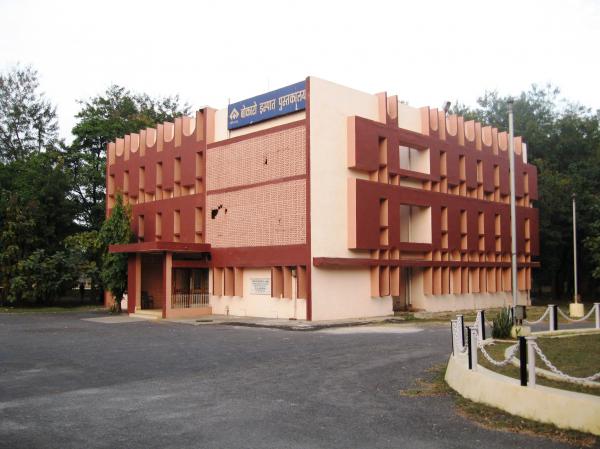How to reach here:
By Air: The nearest domestic airport is at Ranchi, which is around 120 km from Bokaro.
By Rail: Bokaro City is well connected through trains, and has an extensive railway network with trains that connect all major cities in India to Bokaro City. You will be able to get regular trains from the Indian cities of Ranchi (Shatabdi Exp), Howrah (Shaktipunj Exp), Patna (Barka Rjpb Exp), Dhanbad (Shaktipunj Exp) and Kolkata (Shatabdi Exp).
Best time to visit: September to March.
Languages spoken: Hindi, English, Bengali.
Places you must visit:
Jagannath Temple in the Bokaro Steel City is a popular tourist attraction, which looks exactly like the Jagannath Temple in Puri, Orrisa. The temple has been recently constructed by the Bokaro Steel Plant Management and has become a prominent place, where devotees come to pray to Lord Jagannath.This place is famous among locals and tourists for its beautiful architecture and peaceful ambience. Every day, aarti is done in the mandir, near dusk.




Kali Mandir, popular temple situated in Sector-5, is dedicated to goddess Kali, who is personification of power. Apart from being the holy premises, the temple serves as a socialising centre for Bengalis residing in Bokaro Steel City. An annual painting competition is organised in this temple, which is attended by many school students of the city.



Chas served as the administrative headquarters of Bokaro during the time when the city was part of the district of Dhanbad. Later, Bokaro itself was designated the status of a district and headquarters was shifted to the Steel Township.

Siwandih is a tourist attraction located near Garga Dam, which is inhabited by natives of Bihar working in the steel plant. The place is home to two popular mosques, one in Millat Nagar and other in Azad Nagar. Moreover, tourists visiting this place also head towards the popular nearby places, such as Islampur, Bansgora, Makhdumpur and Haisabatu.

Jawaharlal Nehru Biological Park is a huge zoological park, which was established in the year 1989. Home to varied species of birds and animals, this park is the biggest zoological garden in the state of Jharkhand. The biggest attraction of this biological park is huge population of big cats, which is owing to the successful multiple breeding. The park is home to many white tigers, asiatic lions and royal bengal tigers.The park premises consist of many interesting things for kids, such as kid’s corner near bear cage, boating in the artificial lake and a small dam. The park also has a small toy train for kids, which is operated inside the park premises. The toy train is known as the Mowghli Express.



Garga Dam features beautiful green surroundings and plenty of aquatic animals. This natural site is venue for many school outings and biological tours. This dam plays a vital role in catering to the water requirements of the steel plant as well as households of this area.


City Park is situated in Sector 3 of the city of Bokaro. The park has an artificial lake, which is thronged by visitors especially on weekends for picnic. The lake also has three Japanese styled artificial islands. There is also a small guest house and a restaurant near the lake, which is visited by tourists coming to the park. a small beautiful park was opened on 1st January 2007 to further add to the beauty of the City Park. The park also hosts Basant Mela in the month of February every year, attracting several tourists. This park is also used as a venue for the Chhatth Puja, in the month of October or November.


Ram Mandir at Bokaro is managed by the Shree Ram Mandir Trust, which organises around 250 marriages of the poor people, every year at low cost. The temple was constructed in the year 1967 by labour leader Pt. Parma Nand Tripathi.The temple is dedicated to Lord Rama, but also has various small temples of Radha Krishna Mandir, Hanuman Mandir and many more. There are also Lord Venkateshwar Mandir, Kali Mandir, Sheetala Mandir and Shiva Mandir located within the premises. The temple also houses a rishi niwas and a holy library.


Bokaro Ispat Pustakalaya is managed by the Bokaro Steel Plant. This library features collection of over 40,000 books mainly comprising manuscripts.


Mohan Kumar Mangalam Stadium is managed by the Steel Authority of India (SAIL). This stadium possesses the capacity of holding 30,000 visitors at a time. Schools of Bokaro arrange various cultural, colorful dance program mes and functions on 14th November every year at this stadium. The stadium has a training center and is headquarter of the SAIL Football Academy.

Noori Masjid is situated in Sector 4 of the Bokaro City. The mosque is biggest of all the existing mosques in the city. Tourists across the globe come here to attend tabliqs.

Aaiyappa Mandir is situated in Sector-5 of Bokaro. This is a prominent place for religious, cultural and social events organised by the people belonging to Southern India. The temple features idols of Lord Aaiyyappa, Lord Vishnu, Lord Shiva and many other Gods and Goddesses. Inaugurated on 11th July 1983, the temple is managed by the Ayyappa Seva Sangham of Bokaro. Every year Prana Pratishta activities are performed in accordance with the Tantra Samuchchaya by priests of the temple. The whole event is organised under the guidance of traditional priests named Sri Kandararu Parameswararu and Sri Kandararu Maheswararu.



No comments:
Post a Comment